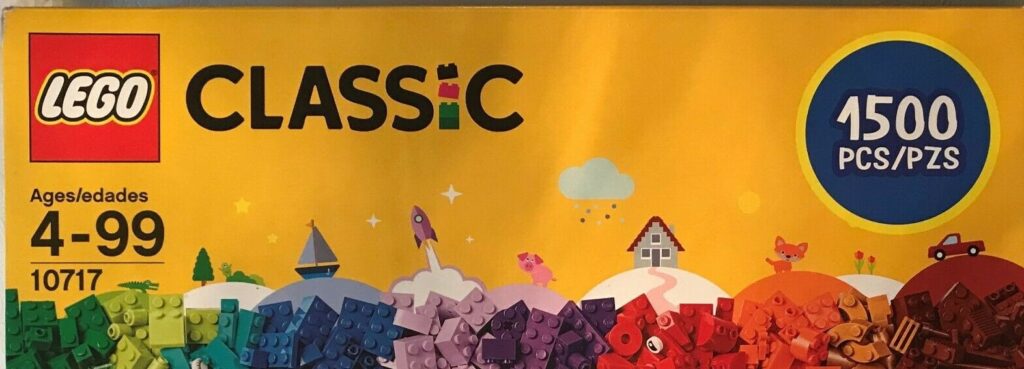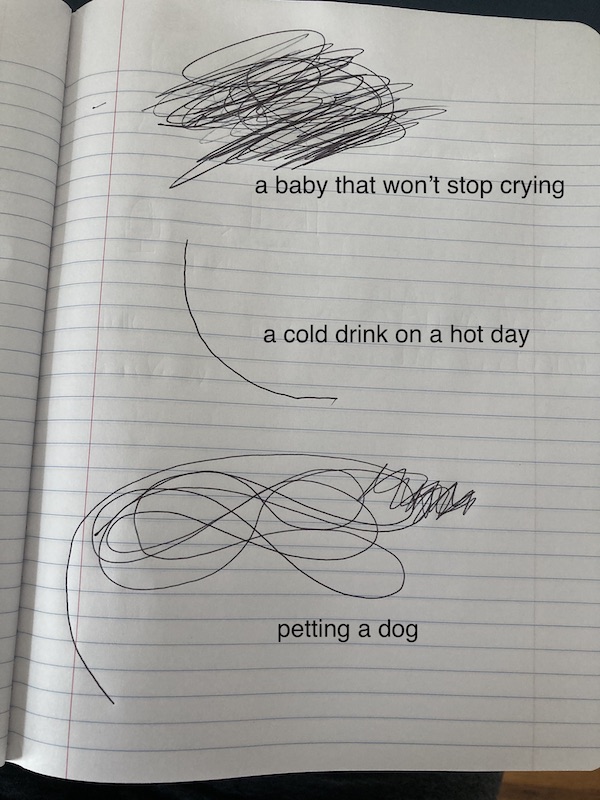Week 5 – Thinking about aesthetics, user journey and and an experiment
Audience and experience
Two important pieces of feedback that I got on my draft proposal were that I could use more clarity when it comes to:
- My goals associated with the aesthetics of the experience
- The intended audience
Both of these led to very helpful conversations that pushed me to start to think a little bit more about what I would like the user journey for my design to be. I don’t have all of the answers but here are a few important takeaways I have at this point:
- The purpose of the experience is more than to simply provide an open-ended creation tool. This is not meant to be a ‘blank canvas’ experience where all you get is a quick tutorial, a set of tools and a blank page. Additional aspects of the experience might result in conceptual understanding, creative sparks via prompting, a new lens on the world, an encounter with beautiful art/artifacts/architecture…what else?
- I think that in considering the potential audience, it is useful to consider both what they will and won’t have to bring to the interaction as well as what the impact might be. One potentially useful way to frame this that came out of my proposal draft was that it might serve as a ‘bridge’ between ways of thinking or communities of practice. Somebody who is comfortable with exploring mathematics and programming on their own and enjoys spatial puzzles might encounter the experience and walk away with an interest in how those skills can be used to create patterns and forms. Alternatively, a graphic designer or artist might come to see the power of computation for generating forms in which they can still feel a form of agency and self-expression and perhaps an interest in exploring creative coding or generative art a little more.
- As with LEGO, I probably would want the ‘age range’ to be 4-99 yrs old:

- For the aesthetics of the experience, I am drawn to the exhibit design at the Exploratorium and MoMath. They provide a certain amount of information or examples but the bulk of the experience is about playful exploration and experimentation. One element of the design of MoMath exhibits that I appreciated was the intentional provision of multiple depths of explanation for the phenomenon that you are encountering.
I stumbled upon a collection of videos that serve as guides to the MoMath exhibits that look very useful as reference material. Here is one example:
I also think that my immediate next steps will involve some UX and UI comparisons and trying to articulate what I would like mine to be. In particular, I find thinking about metaphors to be very helpful when trying to understand experiences (is teaching gardening, policing, building, etc.?) and might apply that technique to the encounter with my procedural engine.
I happened upon a quote from a previous ITP student, Philip Galanter, that I think starts to point me in the right direction:
“It was as if I was showing animal skeletons or dinosaur bones and asking the audience to imagine what it was like when these creatures were walking the earth. Now I am trying to create systems that reveal themselves as processes before the audience. Metaphorically, I want to show living breathing animals and not just bones. The artwork should be the generative process not the trace the generative process leaves behind. Verbs not nouns.”
-Philip Galanter (http://www.artificial.dk/articles/galanter.htm)
The subjective line experiment
For my experiment this week, I was interested in finding a very simple way to start to probe the different ways that people respond to creative prompts and what some characteristics of expressivity in tool use might be.
For the experiment, I had the participant get a pen and paper and then I gave them 3 different prompts all that began with the phrase “Draw a line that represents…”. Then I gave them a brief countdown so they had a moment to process the prompt and start to develop an intention. Here is the result of the experiment:

I would be interested in trying this on other people in the future to see what other lines look like. With this particular person, I was interested in how the expressivity came through not so much in the particular microstructure or fine contours of the line but more through elements like speed and pressure applied as well as some general macrostructure features such as loops.
Related Posts
Leave a Reply Cancel reply
You must be logged in to post a comment.
Kat Sullivan
Adam Colestock
Helen (Chenuan) Wu
Christina Lan
Dorian Janezic
George Faya
Julia Myers
Kelsie Smith
Michael Morran
Po-Wen Shih
Liu Siyan
Fisher Yu
—
Craig Protzel
Christopher Wray
Haoqi Xia
Hayden Carey
Katherine Nicoleta Helén
Maria Maciak
Parisa Shemshaki
Sakar Pudasaini
Skyler Pierce
Steven Doughty
Yiqi Wang
—
Andrew Lazarow
Benoit Belsot
Enrique García Alcalá
Hongyi Zhang
Jay Mollica
Li Shu
Teddy (Jian) Guo
Monika Lin
Wenye Xie
Yiru Lu
